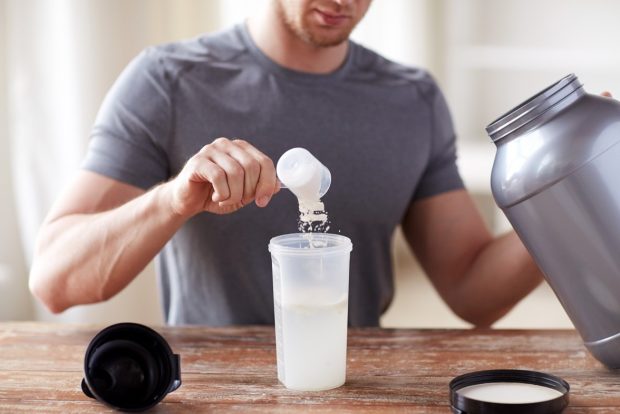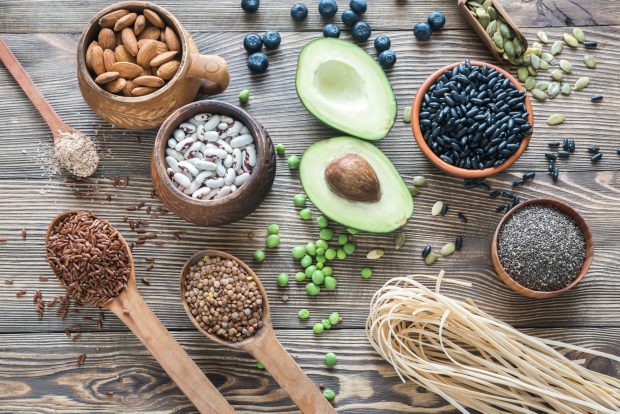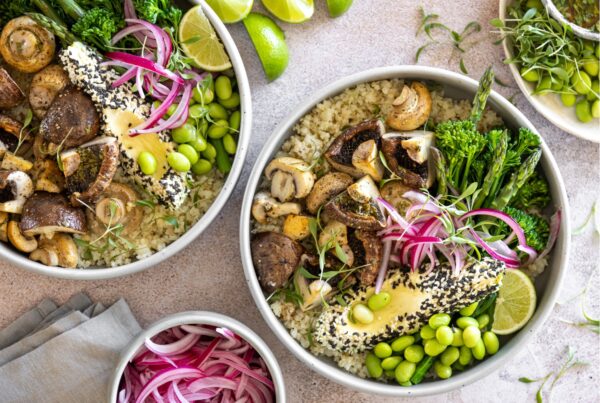As we age, it’s essential to pay closer attention to our health and care for our bodies in the best way possible. Unfortunately, over time, our bones and muscles become weaker, but there are plenty of ways to combat the aging process.
All adults, particularly those over the age of 50, should try to work at least 30 minutes of physical activity every day, even if that means just taking a walk around the neighborhood in the morning or evening. In addition to physical activity, maintaining a nutritious, well-balanced diet is vital to cultivating a healthy lifestyle. Protein is one of the most important nutrients we consume every day and, as we get older, we need to pay particular attention to our protein intake, where we are getting it from, and how much we have.
Why Should Seniors Monitor Their Protein Intake?

Older adults are at a higher risk for disease and injuries, but if you’re taking the proper precautions, you can lower your chances of these ailments. Our dietary habits are one of the best places to start with prevention. Over the age of 50, most people begin a process of muscle loss called sarcopenia and their bodies become increasingly resistant to building muscle. Unfortunately, those who lead a more sedentary lifestyle will likely notice this process beginning earlier in life, but integrating basic exercise into your day can counter this degeneration.
Because our bodies make it more difficult to gain muscle as we age, many nutritionists recommend that seniors up their protein intake to encourage their muscles to continue growing. Composed of amino acids, protein makes up virtually every part of our body. One of its main uses is aiding muscle growth. This is one of the reasons why so many fitness experts recommend drinking a protein shake after a workout.
Protein can expedite the process of muscle recovery. The same rings true for older adults. Even if you don’t drink your shake post-workout, adding protein shakes as part of your regular diet can boost your protein intake and aid in muscle building. Consuming higher amounts of protein as an older adult can also improve your bone health and provide your body with much-needed calcium and vitamins.
What Is the Recommended Protein Intake for Older Adults?
Since World War II, a team of experts at the Institute of Medicine of the National Academies periodically updated the Dietary Reference Intake (DRI), a comprehensive document outlining suggested health guidelines. You’ll find Recommended Dietary Amounts (RDA) for each essential food group within the DRI. Currently, the RDA, which was most recently updated in November 2017, advises Americans to consume 0.8 grams of protein per kilogram of body weight every day. Though the RDA has not altered these guidelines based on age, most nutritionists agree that seniors greatly benefit from increased protein consumption.
Research from a number of organizations, the University of Canada, recommends somewhere between 1.0 to 1.2 grams of protein per kilogram of body weight as a more realistic guideline for older adults. Not only do seniors experience muscle deterioration as they age, but many people also notice a change in appetite. Because older adults tend to desire less food, they often suffer from protein deficiencies for their age.
Best Sources of Protein for Seniors
If you’re concerned about your daily protein intake, you should try tracking how much you ingest and which sources you are using to fuel your protein consumption. These are some of the best sources of protein that you can begin integrating into your diet now.
1. Protein Powders

While you certainly need to consume protein from a variety of sources, protein powder can be a great way to introduce more protein into your diet without needing to eat more. Get a heavy-duty protein shaker and try drinking a shake each morning to kick-start your metabolism and bump up your protein intake.
2. Animal Sources
As we consume protein, our bodies break it down into amino acids, which are used to fuel many of the most important bodily functions. Of the 20 different types of amino acids that exist, eight of them are considered essential amino acids. These are amino acids that our bodies cannot create on their own but must be consumed. Animal proteins tend to have more of these essential amino acids and typically possess a higher protein content.
-
Beef
Many nutritionists have contradicting viewpoints on how often humans should consume red meat, with some people believing that it can lead to health issues like heart disease while others consider it to have no negative health effects. High in protein, beef also contains a high level of fat, which is why some people shy away from this source. If you want to keep red meat as part of your diet, try limiting your intake, particularly if you have a history of high cholesterol or heart disease.
-
Chicken
Considered as lean meat, chicken is an excellent, healthy source of protein. With hundreds of recipes out there, you can easily integrate chicken into your daily diet whether you add it to salads, use it in a sandwich at lunchtime or bake it for your evening meal. When using chicken as a main source of protein, you should avoid eating the skin, as this is where most of the bird’s unhealthy fat is located.
-
Fish
Fish should be a part of every adult’s diet because of its protein content and its plethora of other health benefits. Fatty fish like salmon and mackerel are high in omega-3 fatty acids, which are extremely useful in promoting heart health and diminishing your chances of developing arthritis and dementia.
3. Plant-Based Sources

Though it’s entirely possible to get all the daily recommended protein strictly from plant-based sources, it is much more difficult. Most plant proteins are not considered complete proteins because, unlike many animal sources, they do not contain all the essential amino acids. This means if you’re following a plant-based diet, you need to keep track of which protein sources you’re consuming and which others you need to supplement your diet.
-
Quinoa
An ancient whole grain, quinoa is one of the few plant-based sources that contains all eight essential amino acids. This tasty rice-like food is very versatile and can be used as a side or a main dish.
-
Lentils
Another source high in protein and lentils are legumes, which also contain important nutrients like fiber, iron, and potassium. You can easily mix lentils into your daily diet by adding them to soup, making a lentil salad, or just eating them with salt and pepper.



![women [longevity live]](https://longevitylive.com/wp-content/uploads/2020/01/photo-of-women-walking-down-the-street-1116984-100x100.jpg)










